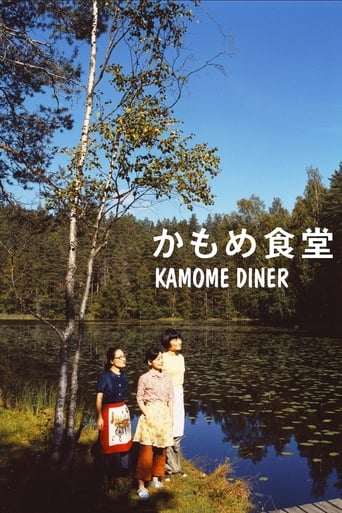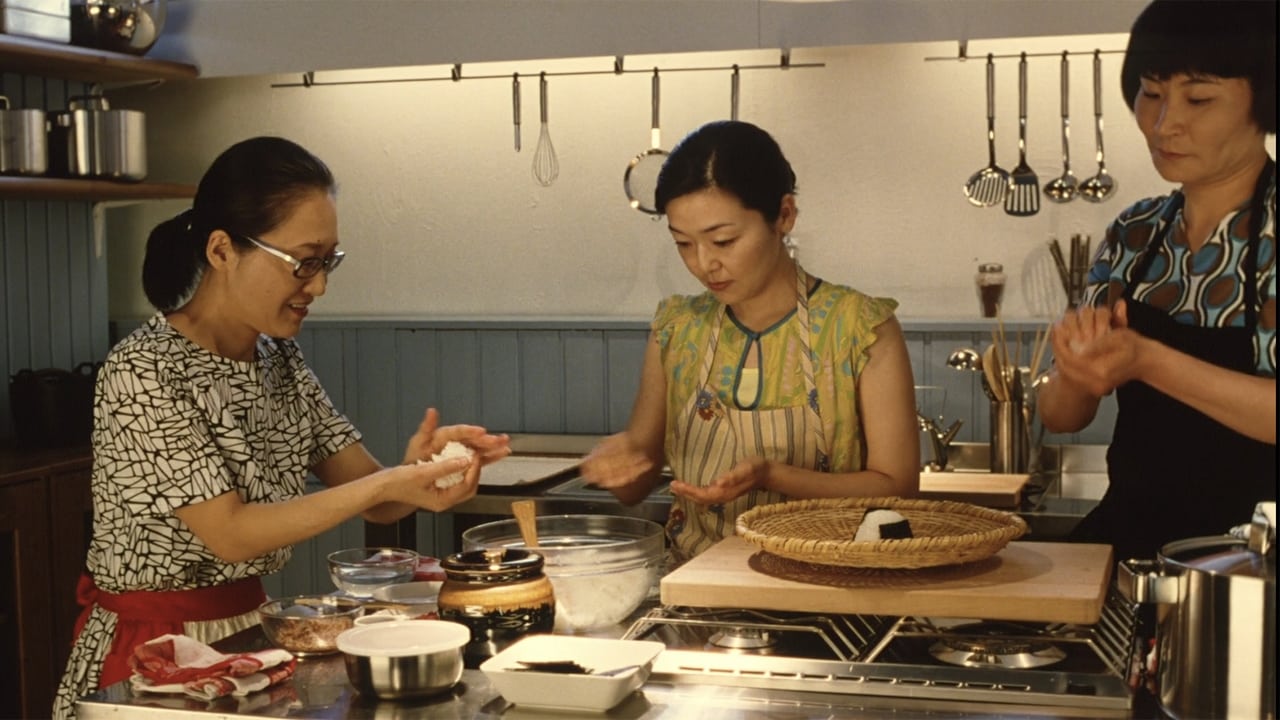aghaemi
Kamome Shokudō (Seagull Diner in English or Ruokala Lokki in Finnish where the drama was filmed) is the story of a Japanese proprietress who has opened her café in Helsinki, Finland to realize a dream of serving Japanese soul food like onigiri. The problem is she (Satomi kobayashi as Sachie) does not have anyone walking in through her door. The film is based on a novel written by author Yoko Mure who has a mostly female following in Japan and, given the story and the largely female cast, that is also where this film's viewership might be. Why do I tell you this? The story is the kind that is likely to spur either love or hate. Disclosure: I am much more in the former camp than in the latter.Everything here is modest, the budget, the film making, the cast of characters, which corresponds to the shokudo's space, decor and menu. The goals may be modest, but when we first walk into the diner not only are those humble dreams unrealized and, moreover, there is little prospect for the better. There is openness and space everywhere - it is Finland after all and they have their forests – but either deliberately or due to time and money constraints not much of it is seen. The viewer does not see much of the area in which the diner is located or the owner's residence or the midnight sun about which we often hear. Even the marina and market shots are kept in perspective. It is a small budget in a wide open space, which is really the state of Sachie's little business. There are not that many surnames to speak of either. She is a cat out of water. She is over forty years old in real life, but passers-by are suspicious of her and comment that she is a "little thing." She has travelled from her homeland of Japan to Finland and loneliness. Yet, lucky for her and us, if there is security in numbers she is about to receive some. Just like the Japanese in real life one often wonders what the characters are really thinking or up to. Is the emotion on the sleeve (and absent) or is there something else going on? The cast ends up sharing a kinship, which they obviously need, except not one of them is readily admitting to it until later and even then barely.Elsewhere, there are a few pieces of trivia and lingering questions including spoilers. 1- Sachie opened her doors a month ago only to see it go unused. It is so sad that after a month she only has one customer (kind of). 2- Why did Midori run away the first time the otaku spoke to her inside the café? 3- Were there mushrooms in the suitcase? Could you say Pulp Fiction? 4- Why was Masako given a cat by a stranger and why did she accept? 5- Masako speaks no Finnish and yet understood that the Finnish lady's husband had left her! 6- One hopes the café would have some Japanese sign or decoration, but there were none (see above)! 7 - It was sad that the heroine's cat had died when she was younger, no one had cared and she had felt so lonely. 8- Oddly for an independent film, the credits roll and out comes Inoue Yosui's rich voice. One night in a hotel room in Japan he was on TV talking about his favourite films. Seems he and I love the same Japanese films and director, one Yasujiro Ozu. He surprisingly closes the diner here. This might pigeonhole the film and turn off many, so please do not take it as an implicit attempt at feeding you notions of a cliché, but Naoko Ogigami hits all the notes of an indie film here. This writer enjoyed the goings-on thanks to the recommendation from Osaka, Naoko Ogigami, Sachie and Japanese soul food.
Motherspot
Great Film ! Very much influenced by Finnish Filmmaker Aki Kaurismaaki. Dry humor , still and slow story of A Japanese woman trying to make it in Helsinki , running her own Diner with Japanese food. Satomi Kobayashi plays an incredible role as the main character.definitely had me falling in love with her character. A good natured film about inter-human relations.A slow film about being nice towards each other.... a humoristic sketch of events in the life of the women and her 2 other Japanese helpers , running the Diner in downtown Helsinki. Though not packed with action , this film radiates a true sense of positive human interaction. Has me longing for other work by this young director !
Tor Lillqvist
I found the film a bit boring and to tell the truth, fell asleep watching it on DVD a lazy Sunday afternoon.I found the acting especially by the young Finnish guy and the middle-aged Finnish woman less than convincing. Especially the "Koskenkorva" episode was a bit unrealistic, why would a woman who is depressed after losing her lover (or whatever the reason was) step into an empty diner, which doesn't at all look like it would even serve alcohol, and ask for a drink of vodka?But anyway, I just wanted to point out the careful selection of older and newer Finnish design classics used in the film. Aalto tables and chairs in the diner, the interiors of the Aalto-designed Academic Bookstore, Antti Nurmesniemi's coffee pots, the Hackman Tools series of pots and pans, Moomin books, and of course Marimekko clothes. Just to mention those I recognized before falling asleep.
shusei
I simply can't understand for what this must have format of a film, which always reminds us of such great people, as Akira Kurosawa,Felini,Tarkovsky. Even if this film was intended to be a simple commercial film, then it's even worse because of the following reasons.This film's plot is very, very loose(if it can be called "plot"). An woman about 30 to 35, opened a Japanese restaurant in Helshinki,at first without anybody's help,keeps it for a few months without getting any customer. Who is she? Where she got that sum of money without which such an ineffective business can't be continued for such a long time. We can't know it throughout the movie,because no one of the authors of the film--the author of the original story,the director and scriptwriter didn't cared about such "little things".Then suddenly appears a young fin, who's very interested in Japanese anime(again we can't know who he is,how his interest in Japanese anime has begun). He asks the restaurant owner the words of an anime song. But why? Does this detail have any relation to the development of the story or main theme(if it exists at all)? No,not at all. It may be replaced by anything--some part of a Japanese poem or words of any traditional or popular songs. So there's no reason for including this song into their conversations of 5-10 minutes duration .Then suddenly appears an middle-aged Japanese woman,who chose Finland for destination of her travel by incredibly random way(spinning a globe and pointing by a fingertip). But why? Authors don't try to even suggest her motive. All events in this film are motiveless or,in rare exceptional cases, with very poor and banal motives. This catastrophic script by a director herself wasn't compensated by directing, because the direction also pointless and without any aesthetic principles.How some Japanese people could see such an empty thing and say,"it's good"? You know, this is not a film, not even a story for literature. It is a poor example of how shots can be edited so that they seemed to represent a one lineal time-space. I as a Japanese clearly know who is really to be blamed. Half-educated television producers who never have respected film history and film art for these 15 years!


 AD
AD



